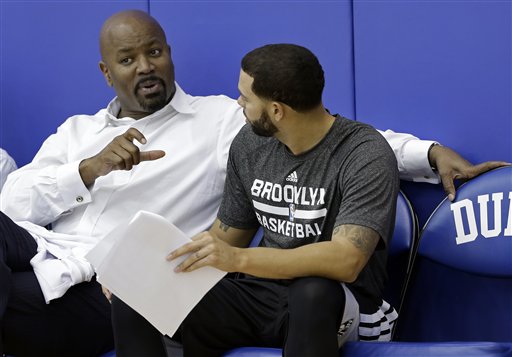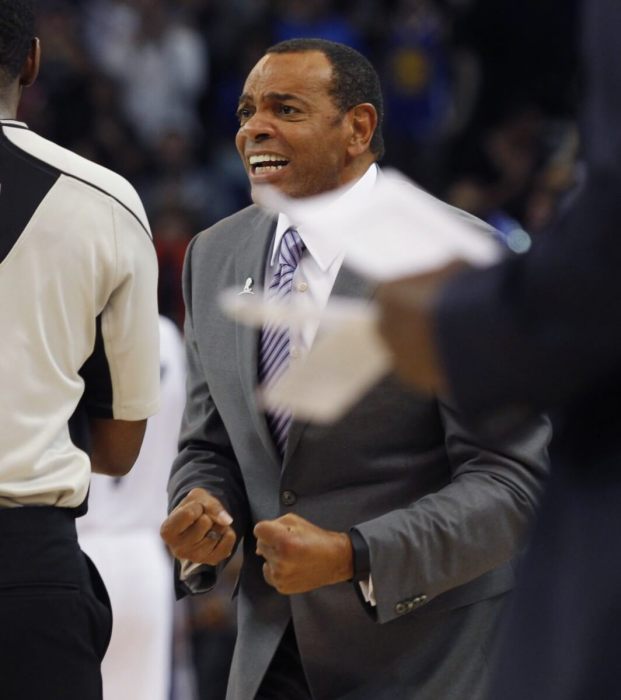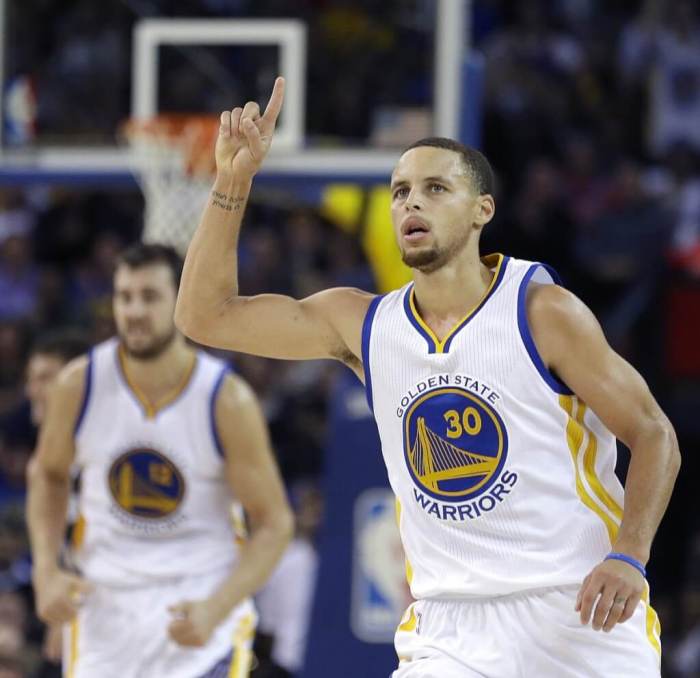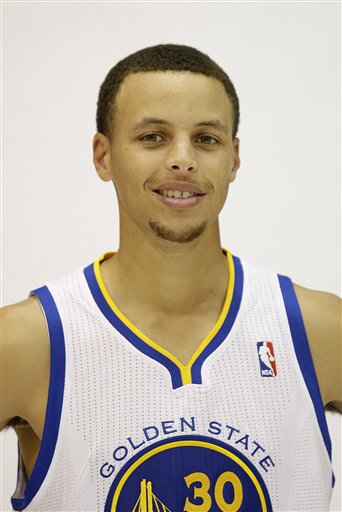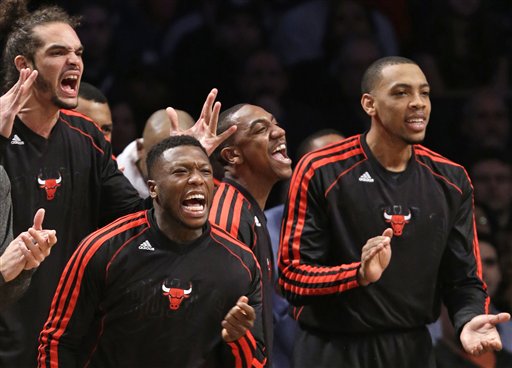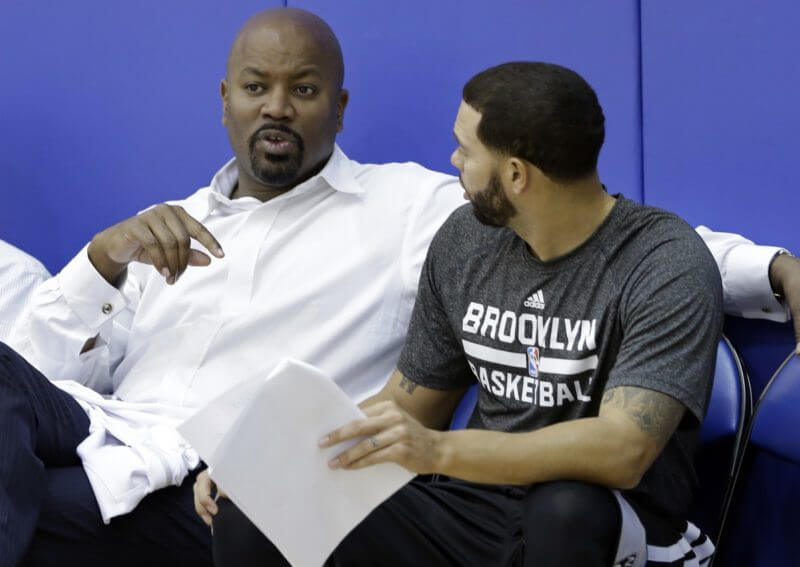
Patience is Paramount: Revisiting Billy King’s first year with the Nets
Sean Marks recently celebrated his one-year (and a day) anniversary of becoming the Brooklyn Nets’ general manager. In his first year, to say the least, the Nets have struggled mightily. Marks made bold offseason moves, some of which have panned out, and some that haven’t. There were also some missed connections (Hey, Yogi Ferrell) but with the trade deadline rapidly approaching, Marks will be tested again. He is being thrown to the Lion’s Den of instant Twitter reactions, where a single tweet can determine the perception of the current front office. If Marks’ job were to be evaluated solely by the Nets’ on-court success, he would receive low ratings all-around. But, as we know, Extreme Makeover: Franchise Edition of the Brooklyn Nets will take time.
It’s often difficult to judge a general manger’s transactions immediately. When the Golden State Warriors traded Monta Ellis to the Milwaukee Bucks for Andrew Bogut, owner Joe Lacob was booed tremendously. Three seasons later, the Warriors became champions with Bogut as a key defensive presence. In 2013, Billy King, Mikhail Prokhorov, and the Nets acquired Paul Pierce, Kevin Garnett, and Jason Terry, seemingly adding “super role players” to a team that had won 49 games the previous year. This was the general sentiment felt by Nets fans after that trade.
Three years later, many of those fans may be too embarrassed to acknowledge their Nets fandom.
While it may not grab headlines, a “three-year rule” for fully assessing transactions may be best, especially for a team focused on the long-term like the Nets. Instant analysis is the norm for NBA coverage and certain moves may look great as the WojBomb mushroom cloud dissolves. But in the long run, these same moves may end up being disastrous even a season later, especially for the Nets.
Perspective is the best cure for split-second hot takes.
Today, let’s take the time machine to the summer of 2010. “California Gurls” by Katy Perry featuring Snoop Dogg is the song of the summer and Toy Story 3 is captivating young and old alike in cinemas. After a horrific 12-70 season, the New Jersey Nets’ Rod Thorn stepped down. Thorn’s final moves as general manager were ultimately promising and Avery Johnson was hired as head coach, who, at that point, held the highest winning percentage of all NBA coaches. The Nets drafted Derrick Favors and Damion James in the 2010 NBA Draft. Thorn signed Jordan Farmar, Anthony Morrow, Johan Petro, and Travis Outlaw after striking out on LeBron James and other major free agents of that summer. Mikhail Prokhorov took full control of the Nets, becoming one of the richest owners in sports.
Enter: Billy King.
King entered a strange position, inheriting a team right after the NBA Draft and free agency. So here’s a look at King’s major moves during the 2010-2011 season.
August 11th, 2010
Nets trade Courtney Lee in a four-team trade for Troy Murphy from the Indiana Pacers
Then: Trading for Troy Murphy signaled that the Nets wanted to make a run at the playoffs. They traded third-year guard Courtney Lee for the veteran Murphy, who was coming off of a strong year in which he averaged 16 points and 11 rebounds per game with the Pacers. Lee was unhappy with his role, going from an NBA Finals team in his rookie year to a 12-win team as a sophomore. With Avery Johnson as the coach, some expected Murphy to be Dirk-lite for Avery Johnson’s Nets, providing floor spacing for Brook Lopez.
Later: The Murphy trade was a disaster even before the Nets’ first game in Newark. The Jersey native Murphy injured his back in training camp, forcing him to miss the preseason and several games at the beginning of the season. Upon his return, Murphy couldn’t replicate his Indiana success, shooting less than 40% overall and 17% from three. He was never the same player, retiring two seasons later.
He was never the same player, retiring two seasons later.
Opening Night Roster, 2010:
Starters: Devin Harris, Anthony Morrow, Travis Outlaw, Joe Smith, Brook Lopez
Bench: Derrick Favors, Kris Humphries, Jordan Farmar, Johan Petro, Terrence Williams, Damion James, Stephen Graham
Inactive: Troy Murphy, Ben Uzoh, Quinton Ross
Then: With Avery Johnson as the new head coach, the Nets were looking to compete. Brook Lopez was entering his third season and was ready to break out, Derrick Favors had unlimited potential as a rookie, and Terrence Williams entered his sophomore season after a strong end to his rookie campaign. Damion James was NBA ready, apparently, and the Nets signed young, overlooked talent in the offseason. Travis Outlaw was the original Mr. Fourth Quarter. Anthony Morrow was a deadeye shooter. Jordan Farmar was a young two-time champion with the Lakers. Johan Petro had moves.
The Nets’ core (seemingly) had upside.
Later: Only two 2009-2010 Nets survived the move to Brooklyn — Kris Humphries and Brook Lopez. The rest were out of the league, becoming NBA journeymen, or for Derrick Favors, becoming modern-day Karl Malone by the time the Nets relocated.
December 15, 2010
Nets traded Joe Smith, Terrence Williams, + a second-round pick for acquired Sasha Vujacic, the Lakers’ 2011 and the Rockets’ 2013 first round picks
Then: The Nets gave up on Terrence Williams early in his sophomore season but were able to acquire a first-round pick for him. Next, the Nets stole from the Lakers, acquiring a young player in Sasha “The Machine” Vujacic and a Lakers’ first-round pick for a soon-to-retire Joe Smith and a second-round pick.
Later: Remember when picks could be acquired for expiring contracts? Now, they’re more valuable than elite offensive centers. Alas, all parts of this trade were short-lived: Williams and Vujacic were out of the league by 2013 — although the latter is back with the New York Knicks currently, but shh. The two first-round picks the Nets acquired were dealt in the MarShon Brooks and Joe Johnson deals, respectively.
They became JaJuan Johnson and Shane Larkin. Ironically, Larkin and Darius Morris, the aforementioned traded second round pick, donned Nets uniforms in Brooklyn.
February 23, 2011
Nets traded Derrick Favors, Devin Harris, + two first round picks (2011 Nets and 2013 Warriors) to the Utah Jazz for Deron Williams
Then: The Nets acquired a bonafide top-10 player and arguably the best point guard in the league in Deron Williams. Although questions persisted on Williams’ attitude stemming from the sudden resignation of Jazz head coach Jerry Sloan, the Nets were universally praised. Compared to the package the Knicks surrendered for Carmelo Anthony, the Nets seemingly acquired Williams at a discount.
Williams was averaging 21.3 points and 9.7 assists per game, a shoo-in All-Star.
Later: Derrick Favors blossomed into a consistent player for the Jazz and is now a key part of that team today. Trading Williams allowed the Jazz to rebuild, drafting young players and (slowly) building a perennial playoff team. The two first round picks became Enes Kanter at no. 3 overall and Gorgui Dieng, via the Warriors, at no. 21, two useful role players today.
For the Nets, Deron Williams was a symbol of the team-wide dysfunction in the Billy King Era. He underwent one of the most rapid superstar declines ever, going from an All-NBA point guard to a liability in the 2014 playoffs. The desperation to appease Williams, and the fear of losing him in free agency, led King to make shortsighted moves. While Williams’ decline may not have been predictable, it was another case of bad luck for the success-hungry Nets.
February 23, 2011
Nets traded Troy Murphy + a 2012 second round pick to the Golden State Warriors for Brandan Wright and Dan Gadzuric
Then: A seemingly minor salary dump on the same day as the Deron Williams trade. The Murphy trade in the offseason obviously ended up being a disaster. The Nets front office did not want to buy Murphy out themselves even though he was in the last year of his deal. So, King and the front office paid the Warriors a second rounder to do the favor. The Nets acquired former lottery pick Brandan Wright, a long, athletic, but oft-injured big man. They were able to take a look at the talent in exchange for a low pick, thus retaining his bird rights.
It was a low risk, possibly high reward move.
Later: Wright, of course, did not re-sign with the Nets after playing just 184 minutes in a New Jersey uniform. Wright blossomed after signing with Dallas, becoming a valuable reserve. Gadzuric, on the other hand, played only 2 NBA games after his Nets run.
The kicker — duh — is that the trade throw-in, a 2012 second rounder, became Draymond Green at no. 35. While the Nets certainly would not have selected Green (or had to tools to shape him into the defensive monster he is today, for that matter), the second round of that draft featured several solid NBA players. Jae Crowder was selected one spot before Green and familiar names like Khris Middleton, Will Barton, Quincy Acy, Justin Hamilton, Mike Scott, and Kyle O’Quinn were drafted after no. 35.
The Nets finished 24-58 that season and 22-44 in their next and final season in New Jersey.
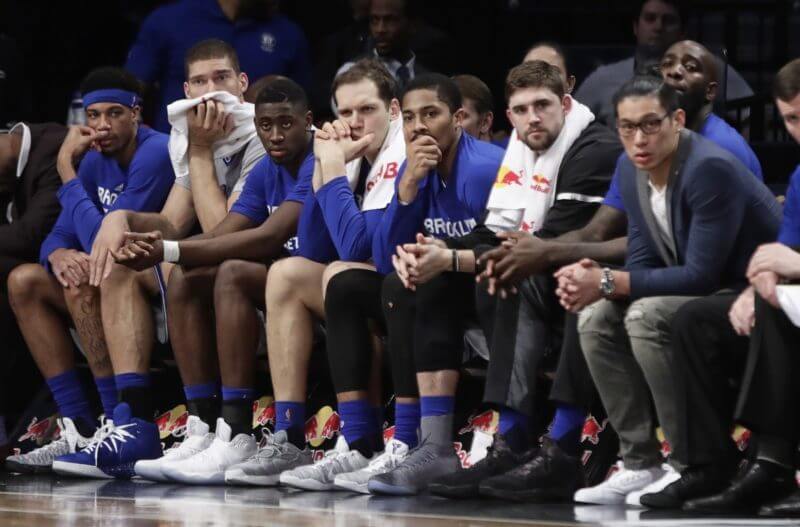
What does this have to do with today’s Nets?
Most sports fans are all about instant results. Especially as New Yorkers, Nets fans aren’t used to slow development. The mere thought of someone walking slowly down subway stairs could be rage-inducing. So, it’s natural for fans to want to evaluate Sean Marks’ performance instantly. After seeing so much turmoil as a Nets fan, three years may finally be enough to fairly judge a transaction. Moves that looked like steals may become failures or vice versa. With this current Nets team, a transaction may not pay dividends next game. It’s for the future.
With this current Nets team, a transaction may not pay dividends in the next game — it’s for the future.
All the transactions in Billy King’s first season looked like Net wins as he acquired young talent, draft picks, and a superstar in exchange for mostly unproven assets. As former Nets Assistant GM (and current Yahoo Front Office expert) Bobby Marks has explained, the vision of the ownership was to build a winner immediately. While the New Jersey Nets were building that foundation, it seems like they skipped a few steps along the way to success.
Yes, hindsight is 20/20. And yes, nobody could have predicted the bad luck that came the Nets’ way in the following years. But three years later, all the assets acquired in King’s first season were flipped, minus Deron Williams, the franchise cornerstone. Nets fans know the story from there. In just a few seasons, the perception of several trades can go from well-earned praise to universal contempt.
And, yes, nobody could have predicted the bad luck that came the Nets’ way in the following years. But three years later, all the assets acquired in King’s first season were flipped, minus Deron Williams, the franchise cornerstone. Nets fans know the story from there, so we can stop right now. In just a few seasons, the perception of several trades can go from well-earned praise to universal contempt.
In just a few seasons, the perception of several trades can go from well-earned praise to universal contempt.
With that said, it still may be too early to judge the moves Marks makes. With the Nets’ 2016-2017 opening night roster, the only way they could have contended for a playoff spot is if every player made a major leap, or if several Eastern Conference teams imploded. The Thaddeus Young trade was met with both criticism and praise. The Nets won’t fully know if the price they paid for LeVert was worth it until 2-3 years down the line. The same could be said for the hiring of Kenny Atkinson, among other transactions.
The same could be said for the hiring of Kenny Atkinson, among other transactions — but one thing is for sure, the Brooklyn Nets have a clear plan for the future.
With the trade deadline looming so largely, it’s important to understand that the Barclays Center wasn’t built in a day. It’s like going to the gym and the results will not come right away — there will be plenty of growing pains, aches, and sweat. But in a few months, things will get better. And in a few years, the workouts that seemed like such a nuisance will lead to a perfect #squatbooty.
The coaching decisions and player issues Nets fans have endured throughout this season may slowly, but surely, improve. Moves that seem puzzling today may become clearer down the line.
As the Nets learned the hard way during Billy King’s tenure, perspective and patience are paramount.

